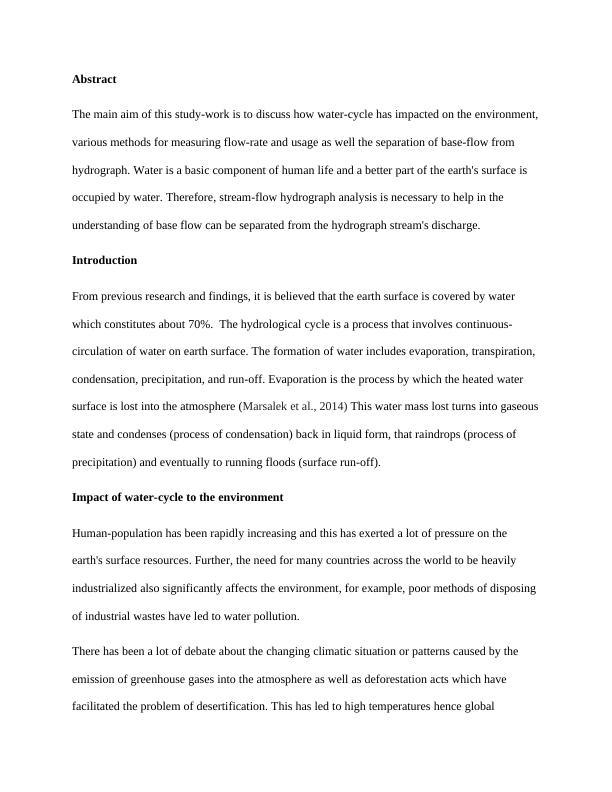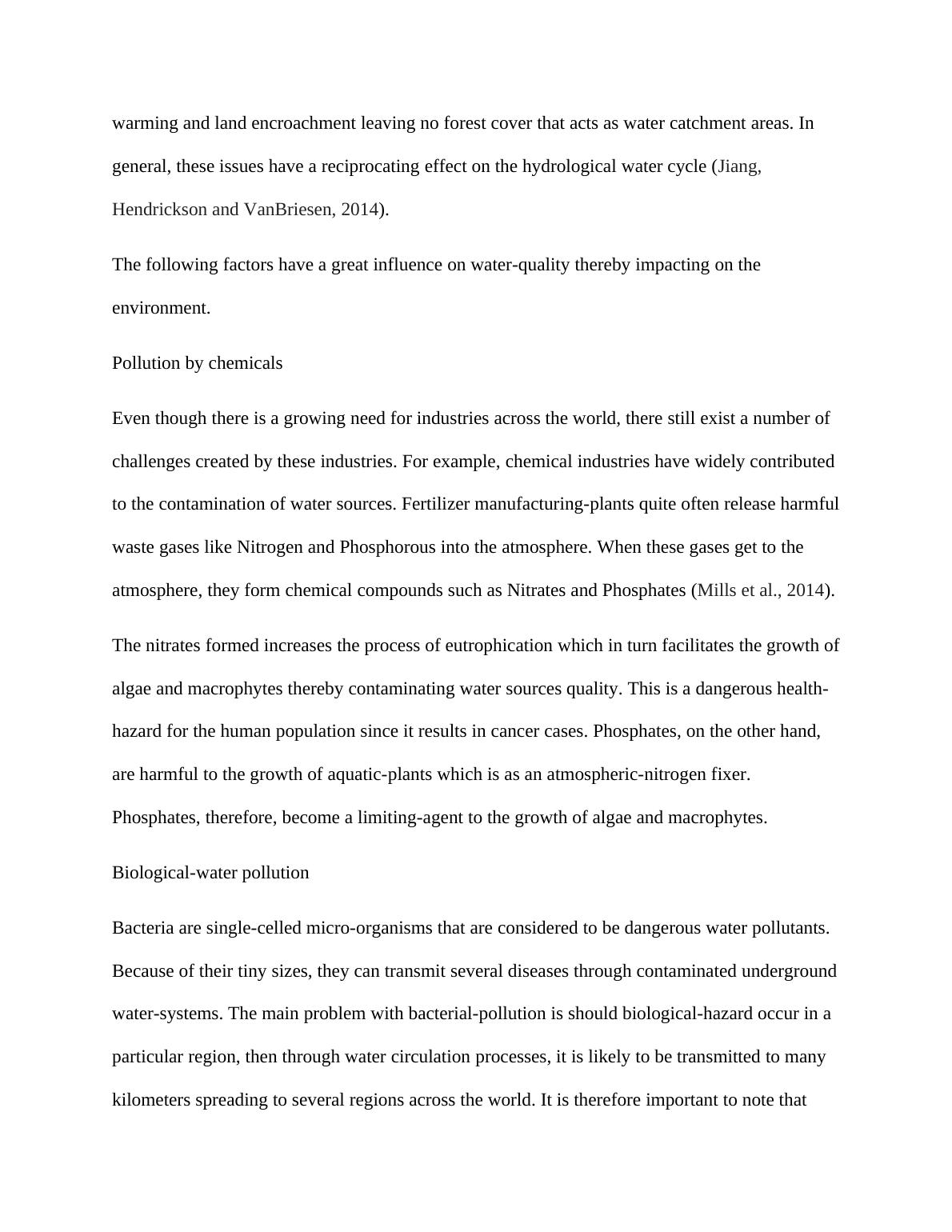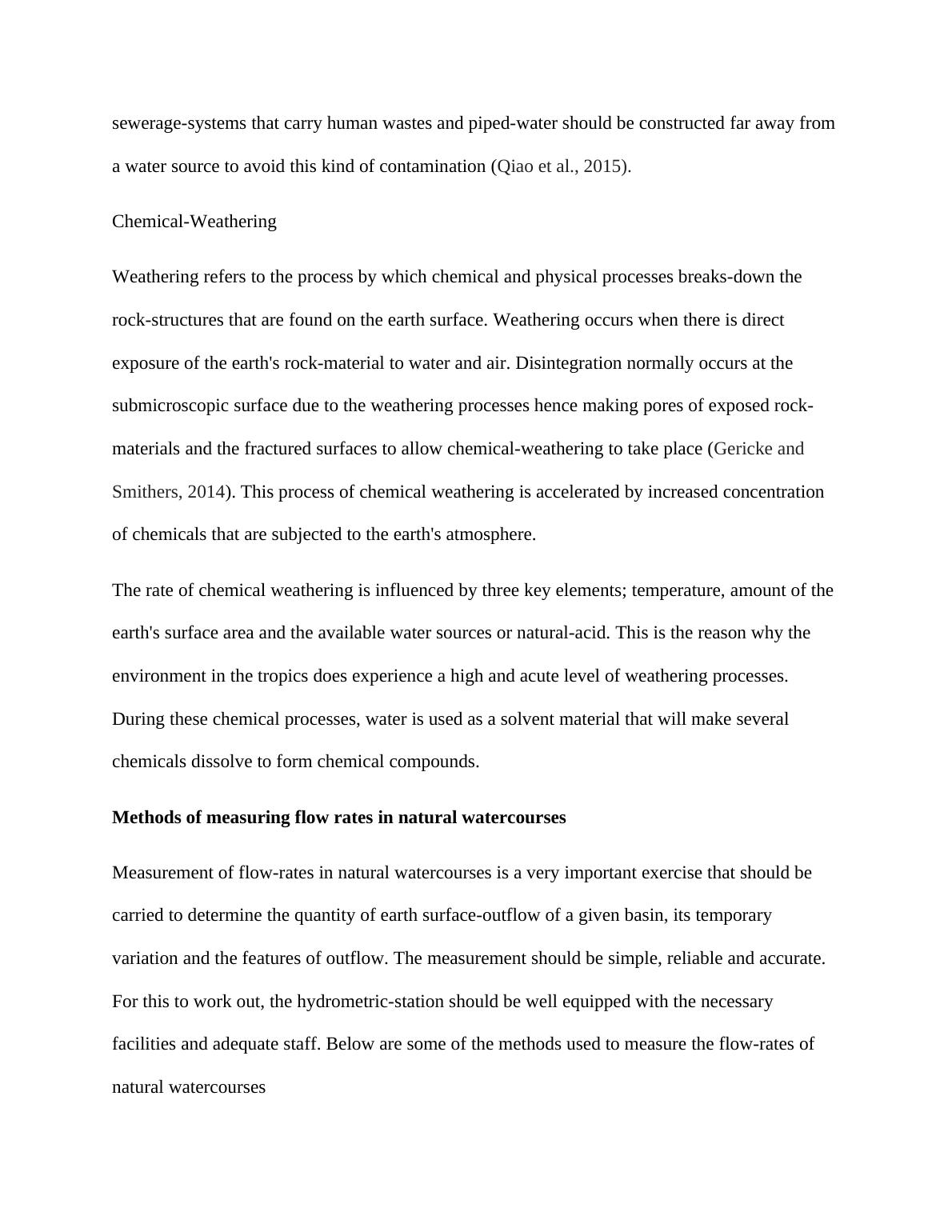Hydrology in Civil Engineering
11 Pages2741 Words47 Views
Added on 2023-01-17
About This Document
This study discusses the impact of water cycle on the environment, methods for measuring flow rates, and separation of base flow from hydrograph in civil engineering. It explores the importance of understanding water flow in natural watercourses and the techniques used for measurement. It also covers the analysis of hydrographs and the separation of base flow from the stream's discharge. This study material is relevant for students studying hydrology in civil engineering.
Hydrology in Civil Engineering
Added on 2023-01-17
ShareRelated Documents
End of preview
Want to access all the pages? Upload your documents or become a member.
Hydrological Process Assignment 2022
|5
|657
|20
Impact of Water Cycle on the Environment
|22
|5676
|28
Deforestation, Atmosphere, Ecosystem, and Agriculture
|4
|773
|100
Sample Collection in Geography
|7
|854
|99
Applied Ethics and Sustainability: Pollution and Exploitation of Marine Environment
|12
|2652
|123
Environmental Management : Water Pollution, Drinking Water Treatment, and Management Processes
|4
|765
|15




